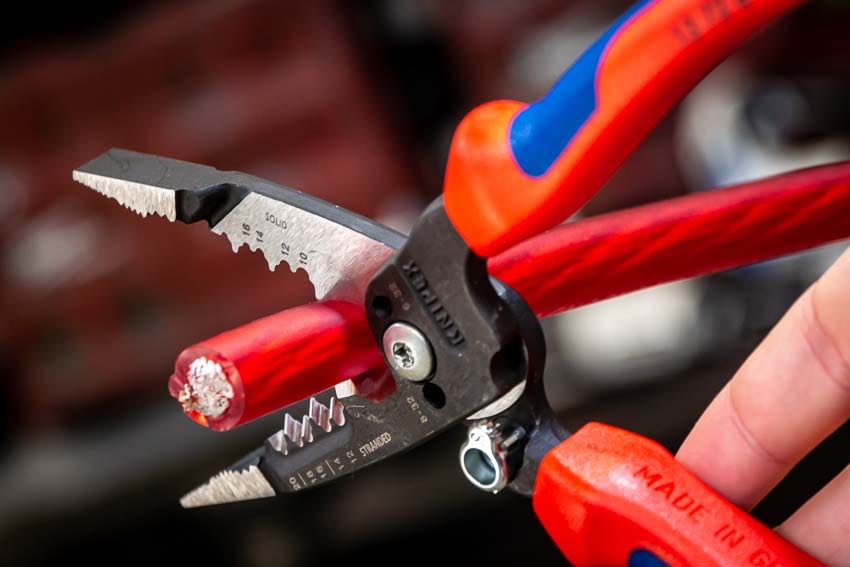Wire strippers are essential tools for anyone working with electrical wiring or electronics. Whether you’re a professional electrician or a DIY enthusiast, having the right wire stripper can make your job easier and safer. In this comprehensive guide, we’ll explore everything you need to know about wire strippers, from their basic functionality to advanced features and tips for choosing the right one for your needs.
What is a Wire Stripper?
A wire stripper is a hand-held tool designed to remove the insulation from electrical wires without damaging the wire itself. This allows you to expose the conductor inside the wire for connections to terminals, connectors, or other wires.
Types of Wire Strippers
Manual Wire Strippers: These are the most common type of wire strippers and are operated by hand. They typically consist of a pair of handles with a cutting blade and a set of notches for different wire gauges.
Automatic Wire Strippers: Also known as self-adjusting wire strippers, these tools feature a mechanism that automatically adjusts to the wire size, making the stripping process quicker and more convenient.
Precision Wire Strippers: Precision wire strippers are designed for delicate work, such as electronics repair or fine gauge wires. They often feature adjustable settings for precise control over the depth of the cut.
Multipurpose Wire Strippers: These versatile tools often combine wire stripping with additional functions such as cutting, crimping, and looping wire ends.
Key Features to Consider
Wire Gauge Compatibility: Make sure the wire stripper you choose is compatible with the range of wire gauges you’ll be working with. Some wire strippers have adjustable notches or settings to accommodate different sizes.
Insulation Type: Different wire strippers are designed for different types of insulation, such as PVC, rubber, or Teflon. Be sure to select a wire stripper that is suitable for the insulation material you’ll be working with.
Comfort and Ergonomics: Since wire stripping can be a repetitive task, it’s important to choose a tool that feels comfortable in your hand and minimizes hand fatigue. Look for features such as padded handles and ergonomic designs.
Durability and Build Quality: A high-quality wire stripper should be durable enough to withstand frequent use without wearing out or breaking. Look for tools made from sturdy materials such as hardened steel.
Safety Features: Safety should always be a priority when working with electrical wiring. Look for wire strippers with features such as insulated handles and safety locks to prevent accidental cuts or injuries.
How to Use a Wire Stripper
Select the Correct Notch: Start by selecting the notch on the wire stripper that corresponds to the size of the wire you’re working with.
Position the Wire: Place the wire between the cutting blade and the notch, ensuring that the insulation is positioned correctly.
Squeeze the Handles: Apply gentle pressure to the handles of the wire stripper to engage the cutting blade with the insulation.
Rotate and Pull: Once the cutting blade is engaged, rotate the wire stripper around the circumference of the wire to score the insulation. Then, pull the insulation away from the wire to remove it completely.
Inspect the Wire: After stripping the insulation, inspect the wire to ensure that no damage has been done to the conductor. If necessary, trim any excess insulation or conductive material.
Tips for Choosing the Right Wire Stripper
Consider Your Needs: Think about the types of projects you’ll be working on and the materials you’ll be working with when choosing a wire stripper.
Read Reviews: Before making a purchase, take the time to read reviews from other users to get an idea of the tool’s performance and reliability.
Try Before You Buy: If possible, try out different wire strippers in person to see how they feel in your hand and how easy they are to use.
Invest in Quality: While it may be tempting to opt for the cheapest wire stripper available, investing in a high-quality tool can save you time and frustration in the long run.
Common Mistakes to Avoid
Using the Wrong Notch: Using the wrong notch on your wire stripper can result in damaged wire or incomplete insulation removal.
Applying Too Much Pressure: Applying too much pressure when stripping wire can crush the conductor or cause the insulation to tear unevenly.
Neglecting Maintenance: Regularly clean and lubricate your wire stripper to ensure smooth operation and prevent premature wear.
Ignoring Safety Precautions: Always wear appropriate safety gear when working with electrical wiring, and never work on live circuits unless absolutely necessary.
Conclusion
Wire strippers are indispensable tools for anyone working with electrical wiring or electronics. By understanding the different types of wire strippers available, key features to consider, and how to use them safely and effectively, you can choose the right tool for your needs and tackle your projects with confidence. Whether you’re a seasoned professional or a DIY enthusiast, a quality wire stripper is sure to become one of the most valuable tools in your toolbox.







